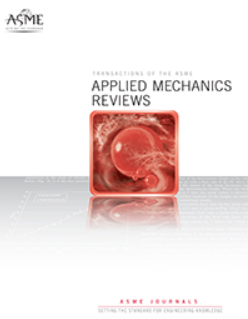双壁矩形结构聚碳酸酯薄板太阳总透射率的理论与实验比较
IF 16.1
1区 工程技术
Q1 MECHANICS
引用次数: 0
摘要
多壁聚碳酸酯板作为建筑元素。对这种材料中发生的热过程进行建模和分析需要了解太阳透射率。在实验室条件下测定的该参数值在产品技术规范中给出。然而,该参数实际上是一个依赖于因子数量的复函数。本文介绍了双壁矩形聚碳酸酯薄板太阳总透射率(TST)的理论和实验研究结果。理论TST的计算是考虑了聚碳酸酯中的光吸收后的透射率和考虑了从通道壁反射的太阳射线的多次反射后的透射率的乘积。第一种透射率是微不足道的,可以忽略。第二个取决于反射层的数量、季节和一天中的时间。实验TST是由热辐射计测量的聚碳酸酯片下和片上的辐照度之比确定的。实验TST也是一天中时间和季节的函数。两种TST在中午前后都有一个近似恒定的值。所选夏季的理论TST值(0.74)与实验TST值(0.75)大致相等。目录中的TST值为0.82。本文章由计算机程序翻译,如有差异,请以英文原文为准。
Theoretical and Experimental Comparisons of Total Solar Transmittance for Polycarbonate Sheet with Twin Wall Rectangular Structure
Multiwall polycarbonate sheets are applied as construction elements. Modelling and analysis of thermal processes that occur in this material demand the knowledge of solar transmittance. Values of this parameter determined in laboratory conditions are given in the technical specification of the product. However, the parameter is in practice a complex function depending on the number of factors. This paper presents theoretical and experimental research results for total solar transmittance (TST) for a polycarbonate sheet with twin wall rectangular structure. Theoretical TST is calculated as a product of transmissivity after accounting for light absorption in polycarbonate and of transmissivity after accounting for multiple reflections of solar rays from walls of a channel. The first kind of transmissivity is insignificant and can be neglected. The second one depends on the number of reflection layers, season, and time of day. Experimental TST is determined as the ratio of irradiance under and above the polycarbonate sheet measured by pyranometers. Experimental TST is also a function of time of day and season. Both kinds of TST have an approximately constant value in the time about noon. The theoretical values of TST (0.74) are approximately equal to experimental values of TST (0.75) for the selected summer day. The value of TST in catalogue is equal to 0.82.
求助全文
通过发布文献求助,成功后即可免费获取论文全文。
去求助
来源期刊
CiteScore
28.20
自引率
0.70%
发文量
13
审稿时长
>12 weeks
期刊介绍:
Applied Mechanics Reviews (AMR) is an international review journal that serves as a premier venue for dissemination of material across all subdisciplines of applied mechanics and engineering science, including fluid and solid mechanics, heat transfer, dynamics and vibration, and applications.AMR provides an archival repository for state-of-the-art and retrospective survey articles and reviews of research areas and curricular developments. The journal invites commentary on research and education policy in different countries. The journal also invites original tutorial and educational material in applied mechanics targeting non-specialist audiences, including undergraduate and K-12 students.

 求助内容:
求助内容: 应助结果提醒方式:
应助结果提醒方式:


